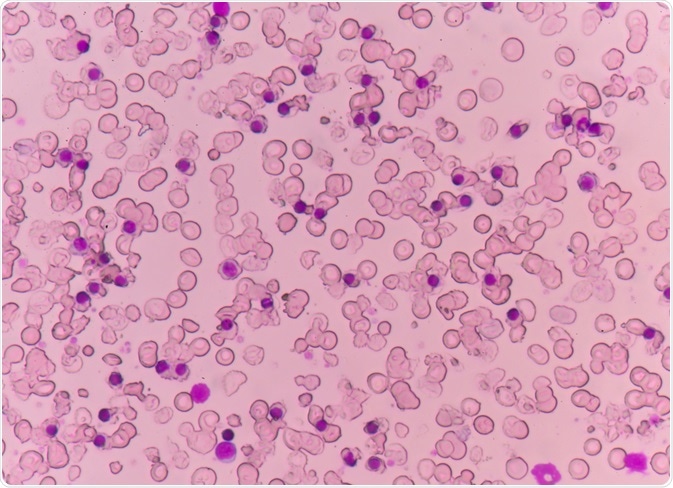Thalassemia is a blood disorder that is caused by DNA mutations in cells that are responsible for producing hemoglobin. This leads to a reduction in the number and ability of the red blood cells to carry oxygen throughout the body and can cause sufferers to feel symptoms such as fatigue.
Hemoglobin is made up of a heme ring of iron and four globin chains, two alpha chains, and two beta (or gamma) chains. The classification of the type of thalassemia depends on the number of gene mutations and the section of the hemoglobin molecule – alpha or beta – that is affected.
Image Credit: Schira/Shutterstock.com
Alpha-Thalassemia
Alpha-thalassemia arises due to insufficient synthesis of alpha-hemoglobin chains and an excess of beta chains. There are four genes on chromosome 16 that are required to produce the alpha region of hemoglobin, two of which are inherited from each parent of an individual. The number of gene mutations corresponds to the severity of the condition as follows:
- One gene mutation: no signs or symptoms but may pass the disease on to children as a silent carrier
- Two gene mutations: mild signs and symptoms, referred to as alpha-thalassemia minor or alpha-thalassemia trait
- Three gene mutations: moderate to severe symptoms, referred to as alpha-thalassemia intermedia or hemoglobin H disease
- Four gene mutations: often fatal before or shortly after childbirth, referred to as alpha-thalassemia major or hydrops fetalis.
Beta-Thalassemia
Beta-thalassemia occurs due to insufficient synthesis of beta-hemoglobin chains and an excess of alpha chains. There are two genes on chromosome 11 that are required to produce the beta region of the hemoglobin chain, each of which is inherited from one parent. The number of gene mutations corresponds to the severity of the condition as follows:
- One gene mutation: mild signs or symptoms, referred to as beta-thalassemia minor or alpha-thalassemia trait
- Two gene mutations: moderate to severe symptoms, referred to as beta-thalassemia major or Cooley’s anemia
Progression to Symptoms
When an individual is affected by gene mutation, the ability to produce normal hemoglobin cells is inhibited. Depending on the type of gene mutation, either the alpha or the beta part of the cell cannot be formed as usual, which leads to a change in the way function of the hemoglobin cell.
Of particular note, the ability of the hemoglobin to transport oxygen to cells throughout the body is reduced, which leads to symptoms of anemia. These symptoms may include fatigue, weakness, and shortness of breath.
Autosomal Recessive Inheritance Pattern
The DNA mutations related to thalassemia are inherited from parents with the condition, which follows an autosomal recessive pattern. If both parents possess one gene mutation, any children will have a 25% chance of inheriting a gene mutation, regardless of whether the parents are symptomatic. If one or both parents possess multiple gene mutations, the risk of gene inheritance increases, and the child is more likely to experience symptoms.
As thalassemia is an inherited condition, individuals with a family history of the condition are more likely to be affected. Additionally, some particular ethnicities are associated with the condition more often, including people with Italian, Greek, Middle Eastern, Asian and African heritage.
References
Further Reading